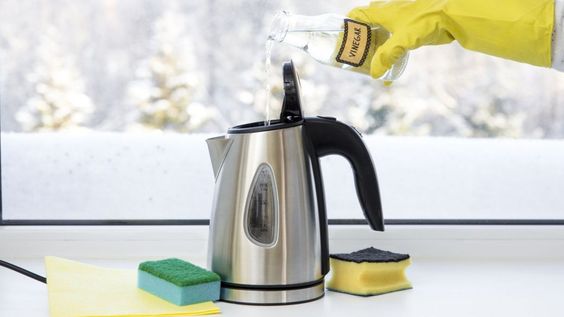If you are used to having a cup of warm water with honey in the morning, or drinking tea and coffee, then you must often use an electric kettle. This is a great appliance that allows you to have a cup of hot water in just minutes. But you will definitely find that after you use it for a period of time, every time you pour out the hot water after boiling, there will be some sediment, which is intolerable. You can see more intuitively inside the kettle and even touch the sediments hanging on the wall.
It’s actually not difficult to deal with these sediments, and you definitely have them at home. Do you want to have a refreshing cup of tea all the time? Then come with me to clean your electric kettle!
Water contains minerals, and when the water is heated, these minerals will become dormant inside. You can check the water quality in your area. If the water quality in the area you live in is relatively hard, then this problem will be particularly obvious. Moreover, the accumulation of these sediments over time will affect the working efficiency of the electric kettle, so daily cleaning is necessary.
How often does it need to be cleaned?
As I said, if you use your electric kettle more frequently, sediment will definitely form faster. It is best to clean it up after daily use. This does not require an in-depth cleaning every time, because although it is not complicated, it is definitely time-consuming and unnecessary to clean it every day, but it can be used after use. Rinse it with clean water (the rinsed water can be used to water the flowers). It is best to deep clean once a month, which will also improve the working efficiency of the electric kettle. If it is not cleaned frequently, its heating capacity will slow down.
Tools needed
1.Rag
2.Bottle brush
3.Lemon
4.Baking soda
5.Dishwashing liquid
How to clean the inside of your kettle

Image From countryliving.com
Use fresh lemons
I’m sure I’m not the only one who can’t stand the smell of white vinegar. In fact, the acid in lemons also has strong cleaning power, and who doesn’t like the fragrance of lemons?
Add two tablespoons of lemon juice, fill the kettle more than halfway and heat. It’s best to leave it for about half an hour after heating. If you can’t wait that long, you can also wait for twenty minutes. It is best to pour out the water from the kettle, then use a rag or a brush specially designed to clean the bottle, and then wash it.
Use baking soda
I believe everyone knows that baking soda is the best cleaning assistant at home. It can not only be used for baking but also for daily cleaning.
Add two tablespoons of soda water, fill the kettle more than half full with water, stir to mix and heat. After heating is completed, it can be left for 10-20 minutes. Finally, pour out the water in the kettle, clean it with a rag or soft brush, and finally rinse it.
With this step, the inside of your kettle will look brand new, and you can have a cup of fragrant and silky coffee. Remember to be gentle when operating, otherwise the inside of the kettle may be damaged.
How to clean the outside of your kettle
Don’t ignore the outside of the kettle. When hot water is boiled, the boiling water may jump out and form water stains on the outside of the kettle. There may also be traces of other kitchen oil stains. Since you want to clean up, you must keep the overall cleanliness. Cleaning the outside is much easier than cleaning the inside.
All you need is a soft rag and dish soap. Wet the rag with warm water, pour some dish soap on it, and wipe the outside. Be careful not to get the dish soap inside. It is also best not to rinse the kettle under running water. Finally, wash the rag and dry it.
How to keep your kettle clean
After each use of the kettle, it is best to pour the water in the kettle into a special water container in time, and do not let the water stay in the kettle.
After use, you can rinse the inside with clean water.
Clean the inside and wipe down the outside regularly.
